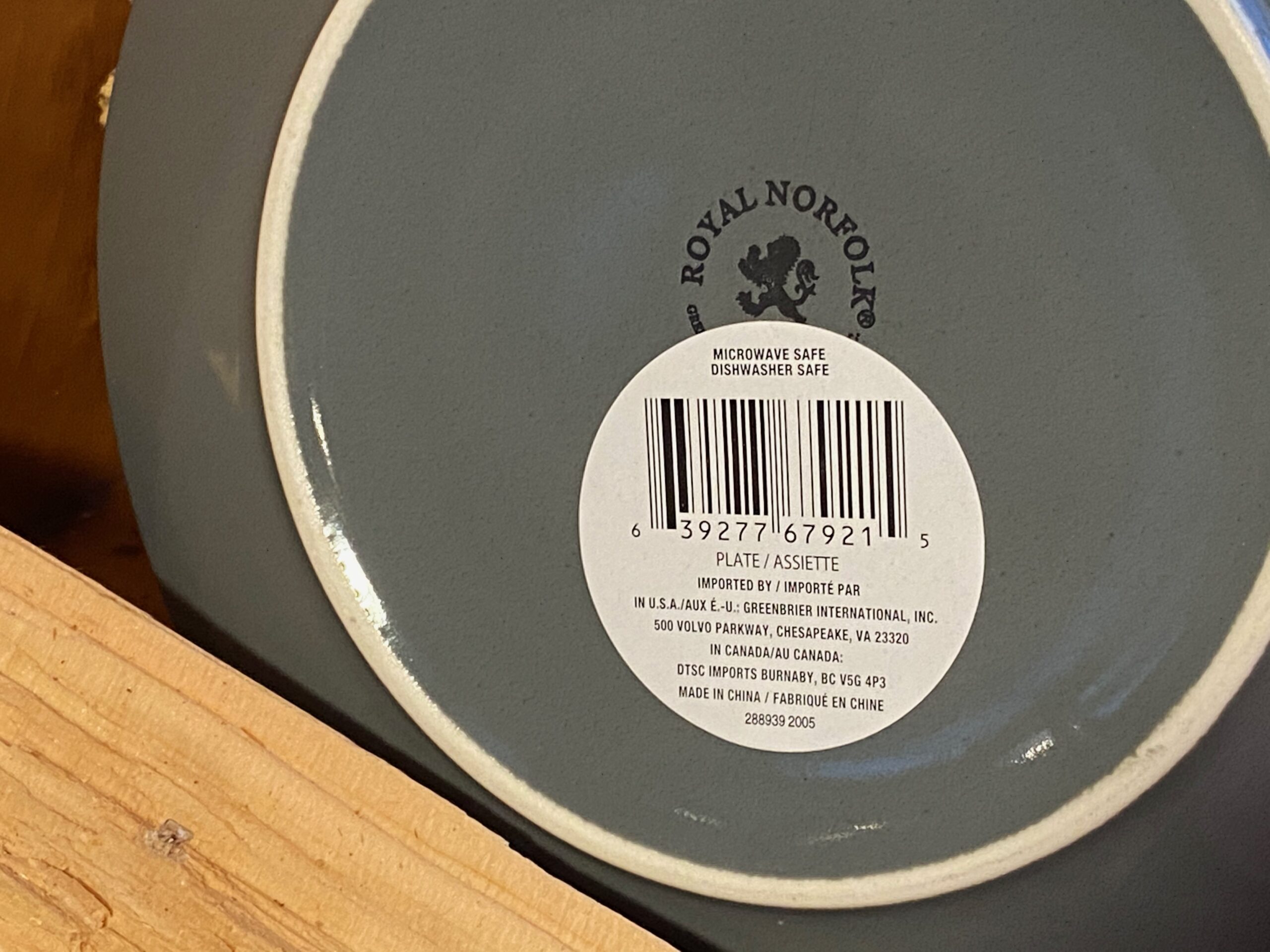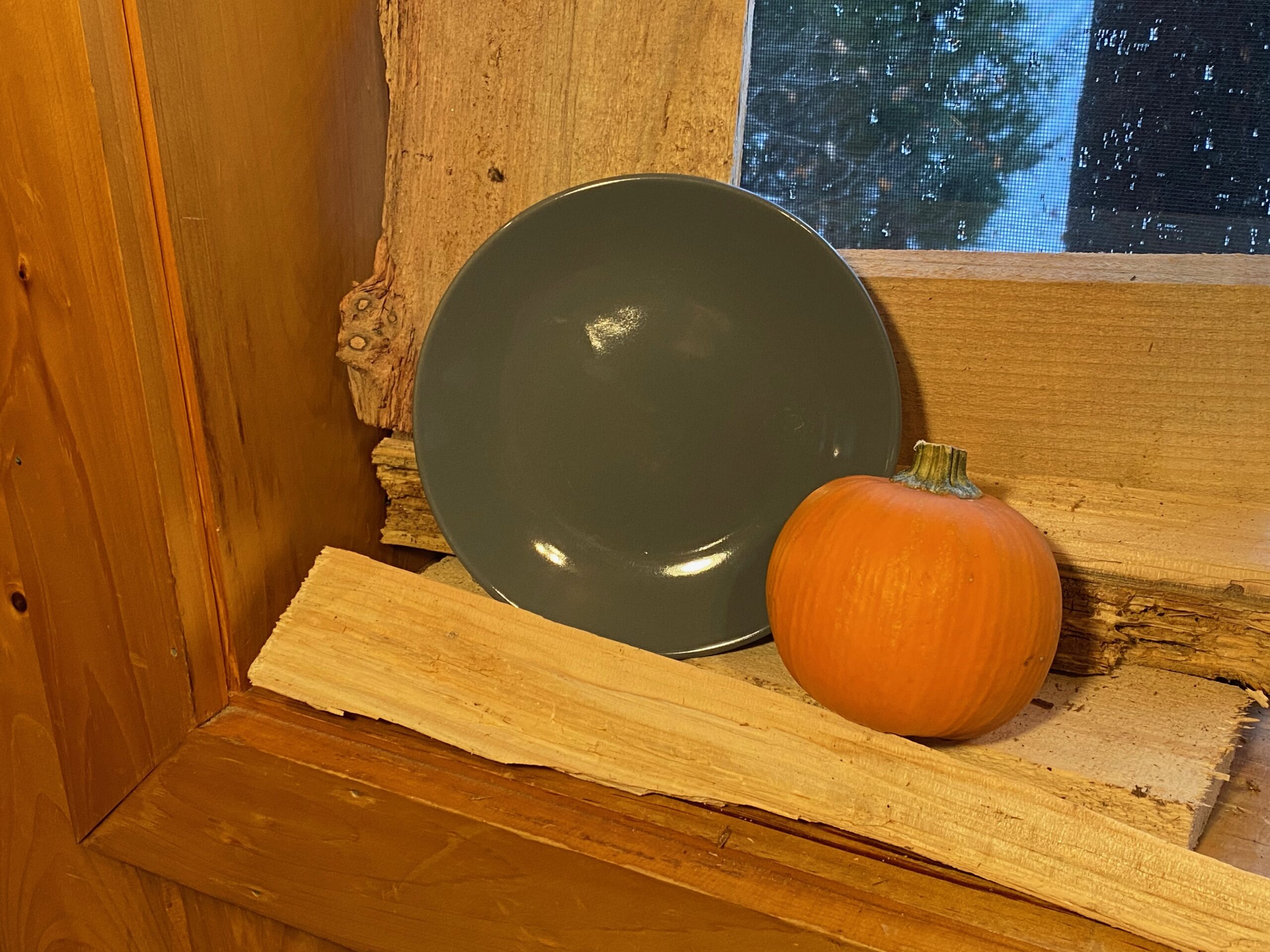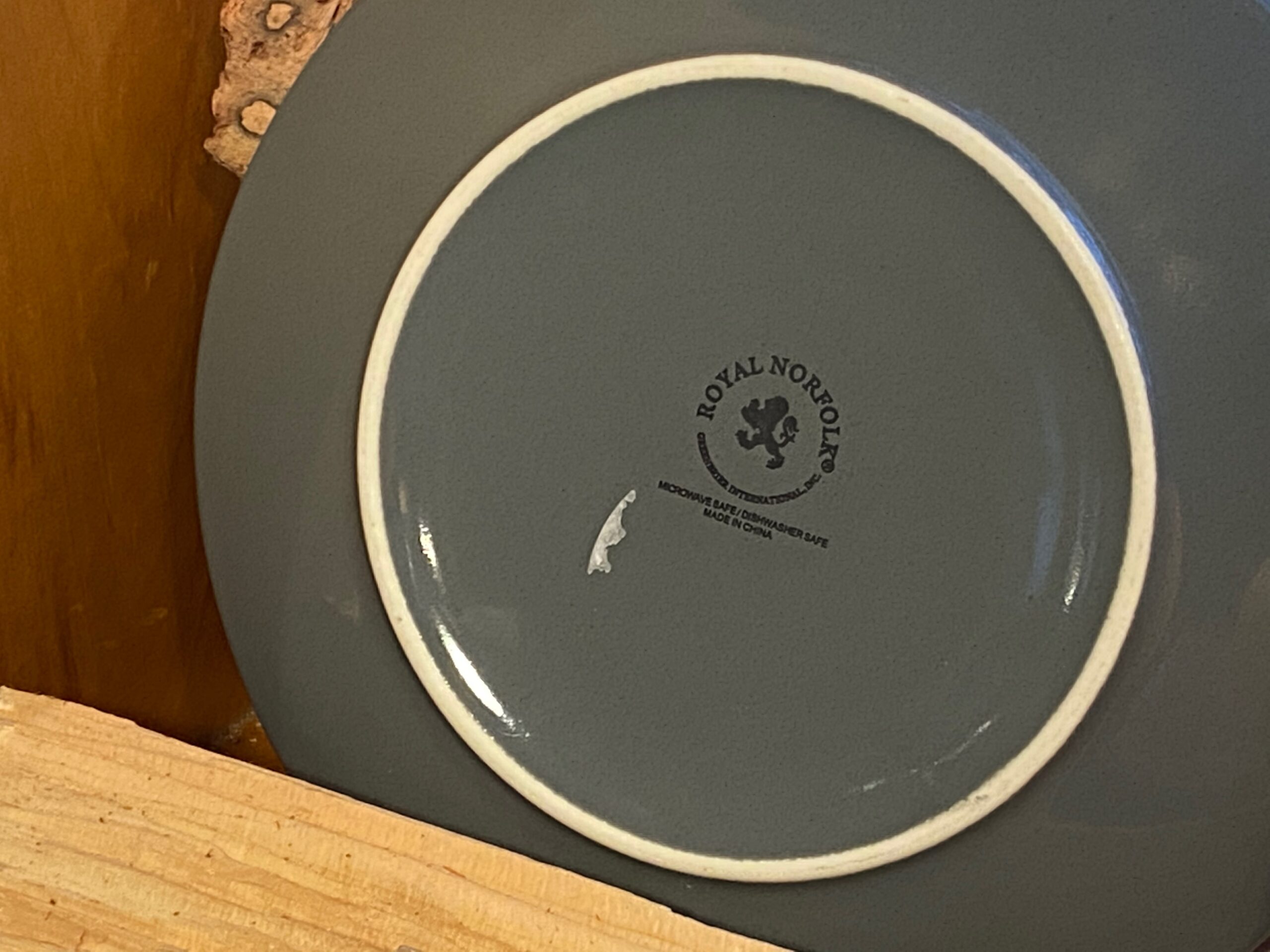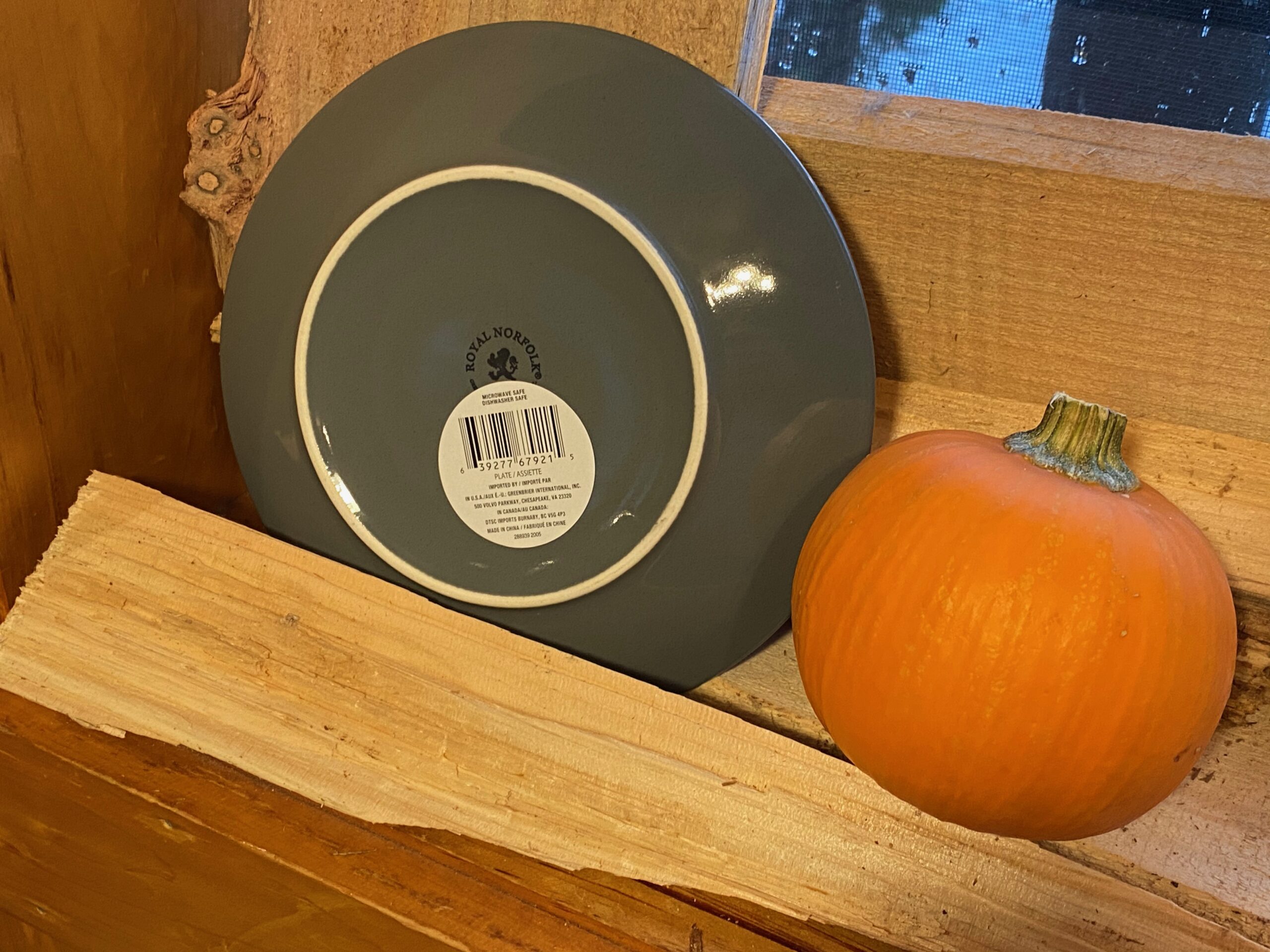Dollar Store Royal Norfolk Greenbrier International Gray Dish: Lead-free, Arsenic-free, Mercury-free, Antimony-free.

 Introduction (for those new to this website):
Introduction (for those new to this website):
Tamara Rubin is an independent advocate for consumer goods safety. She is also a mother of Lead-poisoned children. She began testing consumer goods for toxicants in 2009 and was the parent-advocate responsible for finding Lead in the popular fidget spinner toys in 2017. Tamara uses XRF testing (a scientific method used by the U.S. Consumer Product Safety Commission) to test consumer goods for metallic toxicants, including Lead, Cadmium, Mercury and Arsenic.
When tested with an XRF instrument, this Greenbrier International ceramic Royal Norfolk dinner plate [with dark gray simple undecorated glaze – purchased at a Dollar Tree store in 2020] had the following readings:
On the food surface of the dish:
75-second test
- Cadmium (Cd): 17 +/- 7 ppm
- Barium (Ba): 2,552 +/- 106 ppm
- Chromium (Cr): 2,699 +/- 355 ppm
- Zirconium (Zr): 18,800 +/- 500 ppm
- Platinum (Pt): 225 +/- 62 ppm
- Zinc (Zn): 6,028 +/- 192 ppm
- Copper (Cu): 448 +/- 52 ppm
- Nickel (Ni): 1,056 +/- 106 ppm
- Cobalt (Co): 2,246 +/- 168 ppm
- Iron (Fe): 3,941 +/- 266 ppm
- Vanadium (V): 4,267 +/ – 408 ppm
- Titanium (Ti): 8,061 +/- 663 ppm
How much Cadmium is “too much” Cadmium?
Even though Cadmium is known to cause cancer is not illegal to apply Cadmium-based pigments on the food surface of functional dishware in the United States. The State of Washington has a limit of 40 ppm above which it considers Cadmium to be unsafe in consumer goods intended for use by children. The Country of Denmark has a limit of 75 ppm. Washington State is also the only State that I am aware of that considers dishware to be an item intended for use by children. With the Cadmium levels found in the glaze this dish would be considered safe by all standards. XRF test results do not indicate whether or not a toxicant is leaching.
Some additional reading:
- To read more about the concern for Lead in pottery and dishware, click here.
- To see more items from the Dollar Store that I have tested, click here.
- To read more about the type of testing I do, click here.
- To read more about the concern for Cadmium in consumer goods, click here.
As always, please let me know if you have any questions.
Thank you for reading and for sharing my posts.
Tamara Rubin
#LeadSafeMama

Never Miss an Important Article Again!
Join our Email List



 Introduction (for those new to this website):
Introduction (for those new to this website): 
